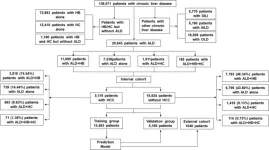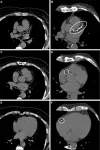(Press-News.org) The Arctic could see summer days with practically no sea ice as early as the next couple of years, according to a new study out of the University of Colorado Boulder.
The findings, published March 5 in the journal Nature Reviews Earth & Environment, suggest that the first ice-free day in the Arctic could occur over 10 years earlier than previous projections, which focused on when the region would be ice-free for a month or more. The trend remains consistent under all future emission scenarios.
By mid-century, the Arctic is likely to see an entire month without floating ice during September, when the region’s sea ice coverage is at its minimum. At the end of the century, the ice-free season could last several months a year, depending on future emissions scenarios. For example, under a high-emissions, or business-as-usual, scenario, the planet’s northernmost region could become consistently ice-free even in some winter months.
For scientists, an ice-free Arctic doesn’t mean there would be zero ice in the water.
Instead, researchers say the Arctic is ice-free when the ocean has less than 1 million square kilometers (386,000 square miles) of ice. The threshold represents less than 20% of what the region’s seasonal minimum ice cover was in the 1980s. In recent years, the Arctic Ocean had around 3.3 million square kilometers of sea ice area at its minimum in September.
Alexandra Jahn, associate professor of atmospheric and oceanic sciences and fellow at CU Boulder’s Institute of Arctic and Alpine Research, set out to analyze existing literature on sea ice projections. She and her collaborators also analyzed sea ice coverage data from computational climate models to assess how the Arctic might change daily in the future.
They found that the first day when sea ice coverage dips below the 1-square-kilometer threshold would occur on average four years earlier than the monthly averages, but could occur up to 18 years earlier.
“When it comes to communicating what scientists expect to happen in the Arctic, it is important to predict when we might observe the first ice-free conditions in the Arctic, which will show up in the daily satellite data,” Jahn said.
The team projected the Arctic Ocean could become ice-free for the first time on a late August or early September day between the 2020s to 2030s under all emissions scenarios.
Jahn said greenhouse gas emissions are the main contributors to sea ice loss. A decrease in snow and ice cover increases the amount of heat from sunlight absorbed by the ocean, exacerbating ice melt and warming in the Arctic.
Sea ice declines have significant impacts on Arctic animals that rely on sea ice for survival, including seals and polar bears. In addition, as the ocean warms up, researchers are concerned that non-native fish could move into the Arctic Ocean. The impact of these invasive species on local ecosystems remains unclear.
Sea ice loss also poses a risk to the communities living near the coastal region. Sea ice plays a significant role in buffering the impacts of ocean waves on the coastal land, Jahn said. As sea ice retreats, ocean waves would get bigger, causing coastal erosion.
While an ice-free Arctic is inevitable, Jahn said future emissions levels will still determine how often the conditions occur. Under an intermediate emissions scenario, a path the current society is on, the Arctic might become ice-free only during late summer and early fall from August to October. But under the highest emissions scenario, the Arctic could be ice-free for up to nine months by late this century.
“This would transform the Arctic into a completely different environment, from a white summer Arctic to a blue Arctic. So even if ice-free conditions are unavoidable, we still need to keep our emissions as low as possible to avoid prolonged ice-free conditions,” Jahn said.
The good news: Arctic sea ice is resilient and can return quickly if the atmosphere cools down.
“Unlike the ice sheet in Greenland that took thousands of years to build, even if we melt all the Arctic sea ice, if we can then figure out how to take CO2 back out of the atmosphere in the future to reverse warming, sea ice will come back within a decade,” Jahn said.
This work was funded by the U.S. National Science Foundation, the Alexander von Humboldt Foundation and NASA.
END
The Arctic could become ‘ice-free’ within a decade
2024-03-05
ELSE PRESS RELEASES FROM THIS DATE:
Habitual short sleep duration, diet, and development of type 2 diabetes in adults
2024-03-05
About The Study: In this study involving 247,000 UK residents, habitual short sleep duration was associated with increased risk of developing type 2 diabetes. This association persisted even among participants who maintained a healthy diet. To validate these findings, further longitudinal studies are needed, incorporating repeated measures of sleep (including objective assessments) and dietary habits.
Authors: Christian Benedict, Ph.D., of Uppsala University in Uppsala, Sweden, is the corresponding author.
To access the embargoed study: Visit our For The Media website at this link https://media.jamanetwork.com/
(doi: ...
Screen time, sociodemographic factors, and psychological well-being among young children
2024-03-05
About The Study: In this multiyear cross-sectional study of a representative sample of young children in the U.S., the increased prevalence of high screen time in 2020 returned to pre-pandemic levels in 2021; however, it remained elevated in children living in poverty. Two hours or more of daily screen time was associated with lower psychological well-being among preschool-aged children.
Authors: Soyang Kwon, Ph.D., of Northwestern University in Chicago, is the corresponding author.
To access the ...
Too little sleep raises risk of type 2 diabetes
2024-03-05
Adults who sleep only three to five hours a day are at higher risk of developing type 2 diabetes. This is demonstrated in a new study from Uppsala University, published in JAMA Network Open. It also shows that chronic sleep deprivation cannot be compensated by healthy eating alone.
“I generally recommend prioritising sleep, although I understand it’s not always possible, especially as a parent of four teenagers,” says Christian Benedict, Associate Professor and sleep researcher at the Department of Pharmaceutical Biosciences at Uppsala University and leading researcher behind the study.
He and a team of researchers have examined the link between type 2 ...
Toward understanding sperm quality
2024-03-05
A novel screening system developed at Kyoto University enables researchers to investigate sperm cell development and health at the molecular level. The new approach, published in Cell Genomics, promises breakthroughs in male contraception and infertility treatments.
The study, led by Professor Jun Suzuki of the Institute for Integrated Cell-Material Sciences (iCeMS), addresses a critical gap by directly targeting genes within testicular cells inside living organisms. Utilizing a genetic tool called CRISPR, which can ...
Game-changing sensor unveiled for spotting chemical threats
2024-03-05
Scientists have unveiled a groundbreaking sensor that can wirelessly detect chemical warfare agents, marking a significant leap in public safety technology. This innovative device, capable of identifying substances like dimethyl methylphosphonate (DMMP), offers a new level of efficiency and reliability in monitoring and responding to chemical threats, without the need for direct power sources or physical connections.
The urgent need for advanced detection of chemical warfare agents (CWAs) to ensure global security has led to the development of a novel gas sensor. This sensor is distinguished ...
The many faces of a zinc anode: Configurations can make a difference in performance
2024-03-05
Sometimes the solution to a problem can be as simple as changing the way the components are structured
Researchers have proposed a reconfiguration of zinc anodes, a component of renewable energy sources, to help improve the battery and reduce the reliance society has on fossil fuels. The potential that different configurations of a zinc anode can have could reduce costs and side reactions while increasing the safety of the rechargeable zinc metal battery (RZMB) and, of course, improve its “green” rating.
The results were published in Energy Materials and Devices ...
Team successfully synthesizes atomically precise metal nanoclusters
2024-03-05
A research team has successfully synthesized a metal nanocluster and determined its crystal structure. Their study provides experimental evidence for understanding and designing nanoclusters with specific properties at the atomic level. Metal nanoclusters have wide-ranging applications in the biomedical field.
Their work is published in the journal Polyoxometalates on February 6, 2024.
Scientists have shown interest in ligand-protected atomically precise metal nanoclusters because they have definite atomic structures and exceptional ...
Rising alcohol-related liver cancer prompts new prediction tool
2024-03-05
Liver cancer, unfortunately, is the sixth most common cancer and the third most frequent cause of cancer-related death globally. However, its distribution and causes vary greatly across different regions. While areas like Eastern Asia and sub-Saharan Africa see the most cases, the reasons behind them differ significantly.
In high-income countries, liver cancer has been on the decline thanks to widespread newborn hepatitis B vaccination and antiviral drugs. Meanwhile, low-income countries witness a worrying rise, ...
Sprinting ‘like a jet’ will produce Premier League strikers of tomorrow
2024-03-05
Sprinting “like a jet plane taking off” will help produce Premier League star strikers of tomorrow, new research has revealed.
A University of Essex study of Tottenham Hotspur’s academy has shown that just a few words can instantly boost sprinting speed by 3 per cent over 20 metres.
It would normally take weeks of targeted training to achieve such a large increase.
These short bursts of acceleration are largely seen in goal-scoring situations and could be the difference in beating a defender and finding the net.
Dr Jason Moran, from the School of Sport, Rehabilitation and Exercise Sciences, discovered simple analogies increased ...
Coronary artery calcium score predictive of heart attacks, strokes
2024-03-05
OAK BROOK, Ill. – Coronary artery calcium scoring with CT can identify symptomatic patients with a very low risk of heart attacks or strokes, according to a new study published today in Radiology, a journal of the Radiological Society of North America (RSNA). Researchers said the findings may one day help some patients with stable chest pain avoid invasive coronary angiography.
Coronary artery calcium scoring with CT was developed to noninvasively measure the amount of calcium in the arteries of the heart. Higher scores are linked with atherosclerosis, a buildup of plaque in the arteries. A score of 1 to 399, for instance, suggests a moderate amount of plaque, while 400 ...






